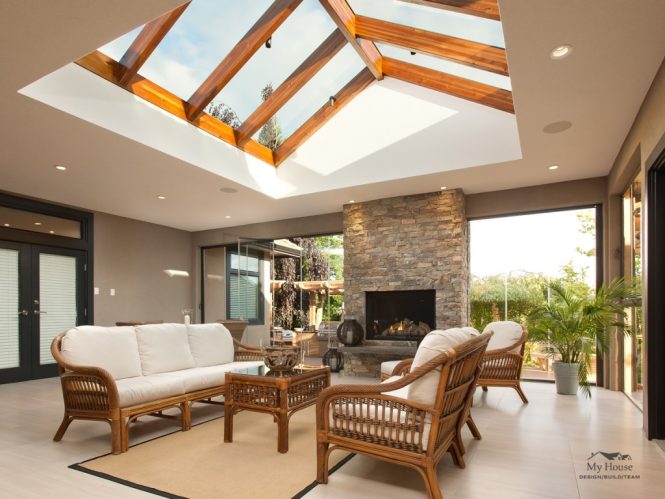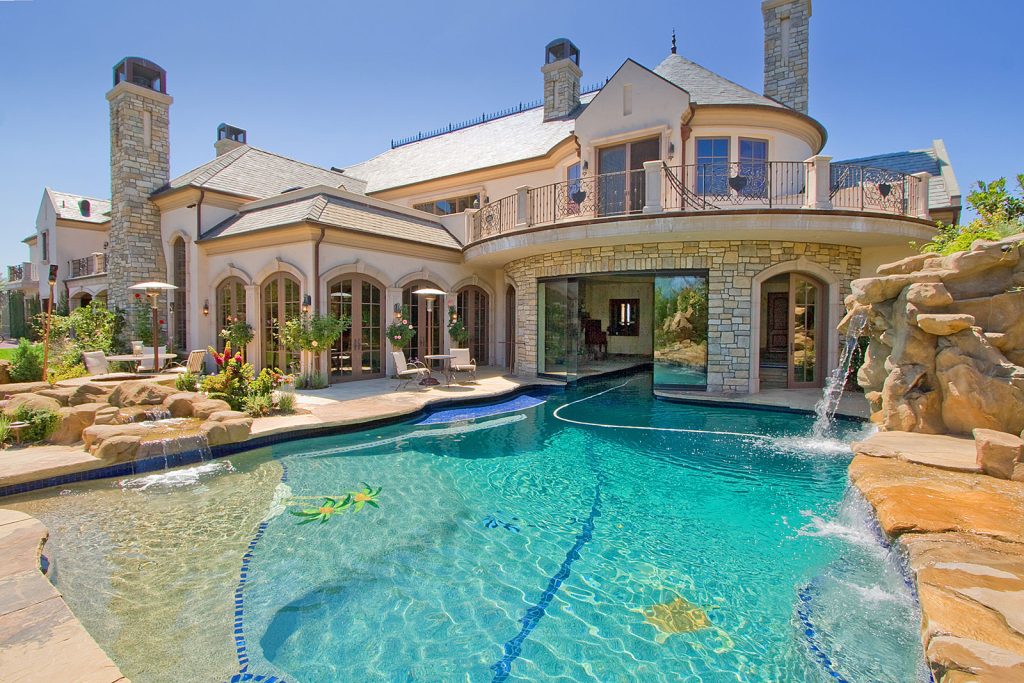

Creating a seamless indoor-outdoor transition is the key to maximizing your living space and enhancing the beauty of your home. Imagine effortlessly flowing from your cozy living room to a sun-drenched patio, the two spaces blending seamlessly into one another. This isn’t just a design trend; it’s a way to improve your lifestyle and boost your home’s value. Many homeowners struggle with the disconnect between their indoor and outdoor areas, leaving them with two separate, underutilized spaces. This thorough guide will offer you with actionable strategies and design ideas to bridge that gap and create the harmonious indoor-outdoor living space you’ve always dreamed of. We’ll cover everything from choosing the right flooring materials to incorporating strategic lighting to achieve a truly seamless transition.
Choosing the Right Flooring for a Seamless Transition
Matching Materials for Indoor and Outdoor Areas
The flooring you select plays a critical function in creating a cohesive flow between your indoor and outdoor spaces. Consider using similar materials or colors to visually connect the two areas. For instance, extending your interior hardwood flooring onto a covered patio can create a feeling of continuity. If your indoor flooring is tile, you might opt for large, outdoor-rated porcelain tiles on your patio to maintain a consistent look. This visual continuity will help to eliminate the feeling of a hard stop between indoor and outdoor spaces. For areas where there’s direct exposure to the elements, make sure to select outdoor-rated materials that can withstand sun, rain, and temperature fluctuations.
Natural Materials for a Harmonious Feel
Natural materials like stone, wood, and bamboo are excellent choices for creating a harmonious transition. These materials bring the outdoors in, creating a peaceful and inviting atmosphere. Wood decking on the patio can be complemented by wooden furniture, and stone paving can be echoed with indoor stone accents. The visual similarity and the sense of natural continuity are very effective, creating a relaxing and welcoming outdoor space. However, make sure to select materials suitable for high-traffic outdoor areas to guarantee durability.
Considering Textures and Colors
The texture and color of your flooring materials also matter. For example, if you have light-colored hardwood floors indoors, select a similar shade for your outdoor decking or patio stones. The subtle variations in texture between indoor and outdoor flooring can add visual interest without disrupting the overall flow. Using complementary colors will help to create a cohesive visual theme that blends the two areas seamlessly. Avoid jarring color clashes that could disrupt the visual transition. To maintain that same theme use large rugs as another transition tool.
Furniture Placement for a Fluid Transition
Creating Visual Connections with Furniture
The arscopement of furniture plays a key function in visually connecting indoor and outdoor spaces. Consider placing outdoor furniture that complements your interior style and color scheme. For example, if you have a modern interior design, select contemporary outdoor furniture that maintains that visual theme. This visual continuity will help to create a seamless transition, blurring the lines between indoors and outdoors. The same rule applies to color schemes; maintaining a similar palette inside and out will help create a unified feel. To create this unified feel, place furniture items that can easily transition between spaces, such as comfortable lounge chairs or ottomans.
Using Furniture to Define Zones
While creating a unified feel is crucial, it’s also helpful to subtly define separate zones within your indoor-outdoor living space. For instance, you might use outdoor rugs or furniture groupings to create distinct areas for dining, lounging, or entertaining. These designated spaces can make the transition between areas more deliberate and enhance the overall user experience. By using the proper furniture, one can create an elegant dining space on the patio that extends the flow of the indoor space, or add relaxing seating areas adjacent to the home to enhance relaxation opportunities.
Creating a Visual Pathway
Consider how furniture can be used to guide the eye and create a natural path from indoors to outdoors. This can be achieved by strategically placing furniture along the transition zone. Use rugs, lighting, and other visual cues to guide the flow from the interior spaces to the outdoor spaces, providing a natural guide for the eyes that makes the transition more intuitive and inviting.
Lighting: Bridging the Gap Between Day and Night
Natural Light as a Key Element
Maximize natural light to seamlessly connect your indoor and outdoor spaces. Large windows, sliding glass doors, and skylights can help to blur the lines between inside and out. Consider the placement of windows and doors to maximize natural light flow, and use sheer curtains or blinds to control the level of sunlight. This way you can easily transition from a bright outdoor space to a cozy indoor environment. Natural light is more efficient in terms of energy consumption and also helps create a relaxing and inviting environment.
Consistent Lighting Styles
Maintaining consistent lighting styles indoors and outdoors will enhance the transition. Consider using similar fixtures or styles of lighting to create a unified look. If your indoor lighting is modern and minimalist, incorporate modern outdoor lighting fixtures with matching styles to blend the spaces efficiently. Using a consistent palette can create a refined and welcoming atmosphere. Remember that efficient outdoor lighting enhances security and makes outdoor activities more enjoyable.
Ambient Lighting for Mood Setting
Ambient lighting is crucial for setting the mood in your indoor-outdoor living space. Use a combination of soft lighting sources and strategic placement to create a relaxed and inviting atmosphere. Fairy lights, lanterns, or path lighting will help to create an inviting environment that smoothly transitions between day and night. The correct lighting can make your outdoor space feel like a cozy extension of your living room.
Color Palettes: Creating Harmony Between Indoors and Outdoors
Using a Cohesive Color Scheme
Extend your interior color palette to the exterior spaces. This creates a visually appealing continuity that makes the transition feel seamless and unified. For example, if your living room attributes warm earth tones, incorporate similar shades into your outdoor decor. This can include furniture, cushions, plants and other decorative items. Employing a consistent color scheme can improve the overall aesthetic of your living space and help unify the design.
Utilizing Nature-Inspired Colors
Nature-inspired colors work well in creating a harmonious indoor-outdoor flow. Shades of green, blue, brown, and beige can create a soothing and tranquil atmosphere. These colors connect the interior spaces to the natural beauty of the outdoors. This can help create an organic and visually appealing transition, with a unified aesthetic that seamlessly integrates the two spaces. Incorporate these colors in varied forms such as through textiles, paint, and natural elements.
Creating Visual Interest with Accents
While maintaining a cohesive color scheme is crucial, you can still create visual interest with accent colors. Use these pops of color to highlight specific areas or design elements. This will prevent your design from appearing bland and monotonous while still maintaining the smooth transition between indoor and outdoor spaces. Accent colors can create interest without disrupting the overall harmony.
Plants and Greenery: Blurring the Lines
Bringing the Outdoors In
Incorporate indoor plants to create a natural connection to the outdoor environment. This simple act can help bridge the visual gap between indoors and outdoors and seamlessly integrate the two areas. Using plants can soften the hard lines of the architecture and help make the transition more natural. This method is budget-friendly and can outcome in a stunning visual effect.
Extending Outdoor Greenery Indoors
Extend the feeling of your outdoor space inwards by placing potted plants or hanging baskets near the transition zone. This creates a natural and visually appealing continuity that draws the eye and helps make the transition feel smooth and less abrupt. This integration of indoor and outdoor elements can create a stunning visual transition, blurring the lines between the two spaces. It will create a more organic aesthetic.
Using Greenery as a Divider
Strategically use plants as a visual divider to define varied zones within the indoor-outdoor space. This will help break up large spaces into more intimate areas, while still creating a seamless and harmonious overall feel. This way, you can delineate spaces without creating any visual barriers. This will make the most of the visual and practical use of space.
Creating a seamless indoor-outdoor flow is about more than just opening up a sliding door. It’s about thoughtfully integrating the two spaces to create a cohesive and inviting environment. By considering flooring, furniture placement, color palettes, lighting, and the strategic use of plants, you can achieve a beautiful and functional transition. Remember to select materials that can withstand the elements if your outdoor space is exposed and prioritize natural light to blur the lines between indoors and outdoors. Start planning your dream indoor-outdoor transition today and enjoy the expanded living space and enhanced beauty of your home!